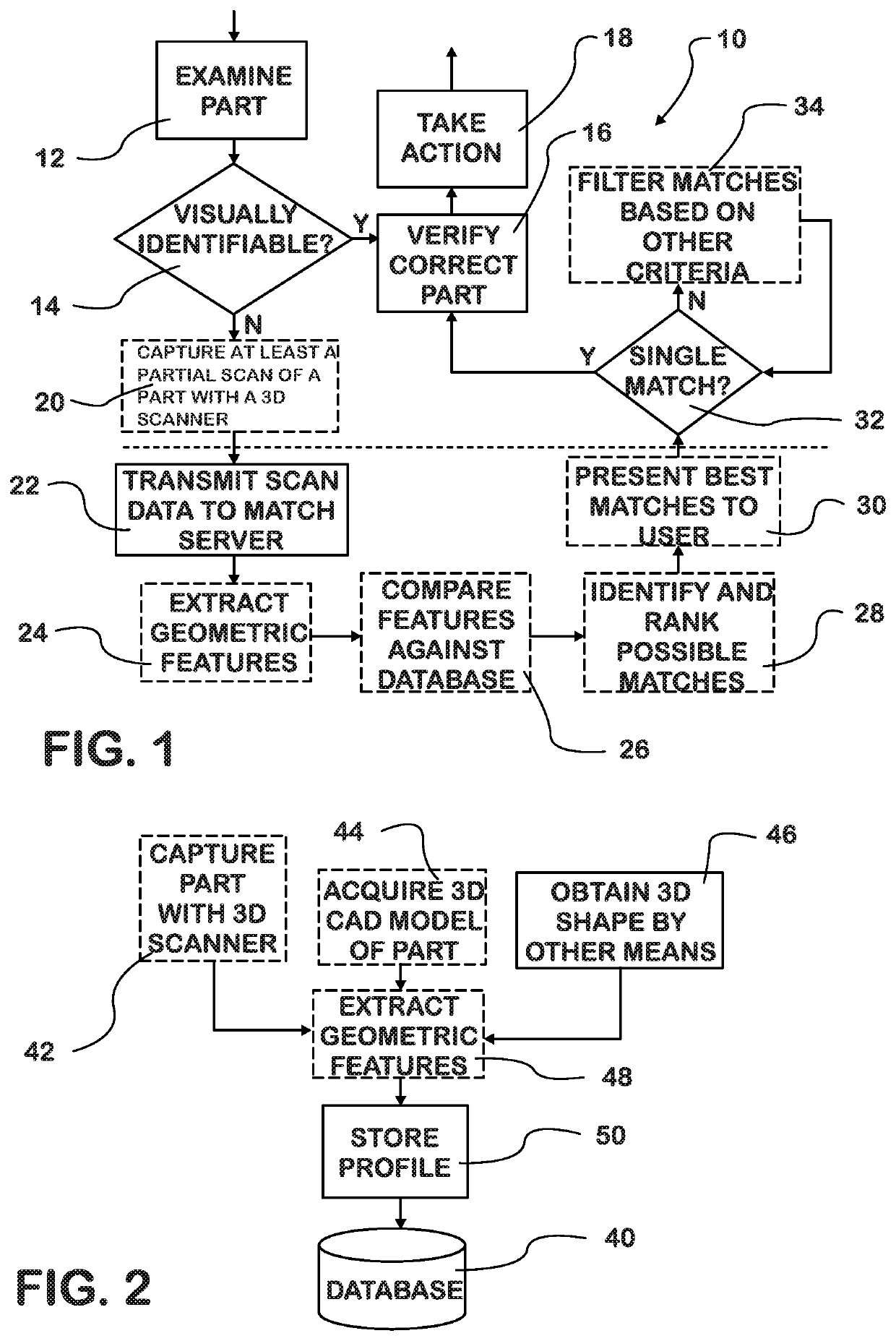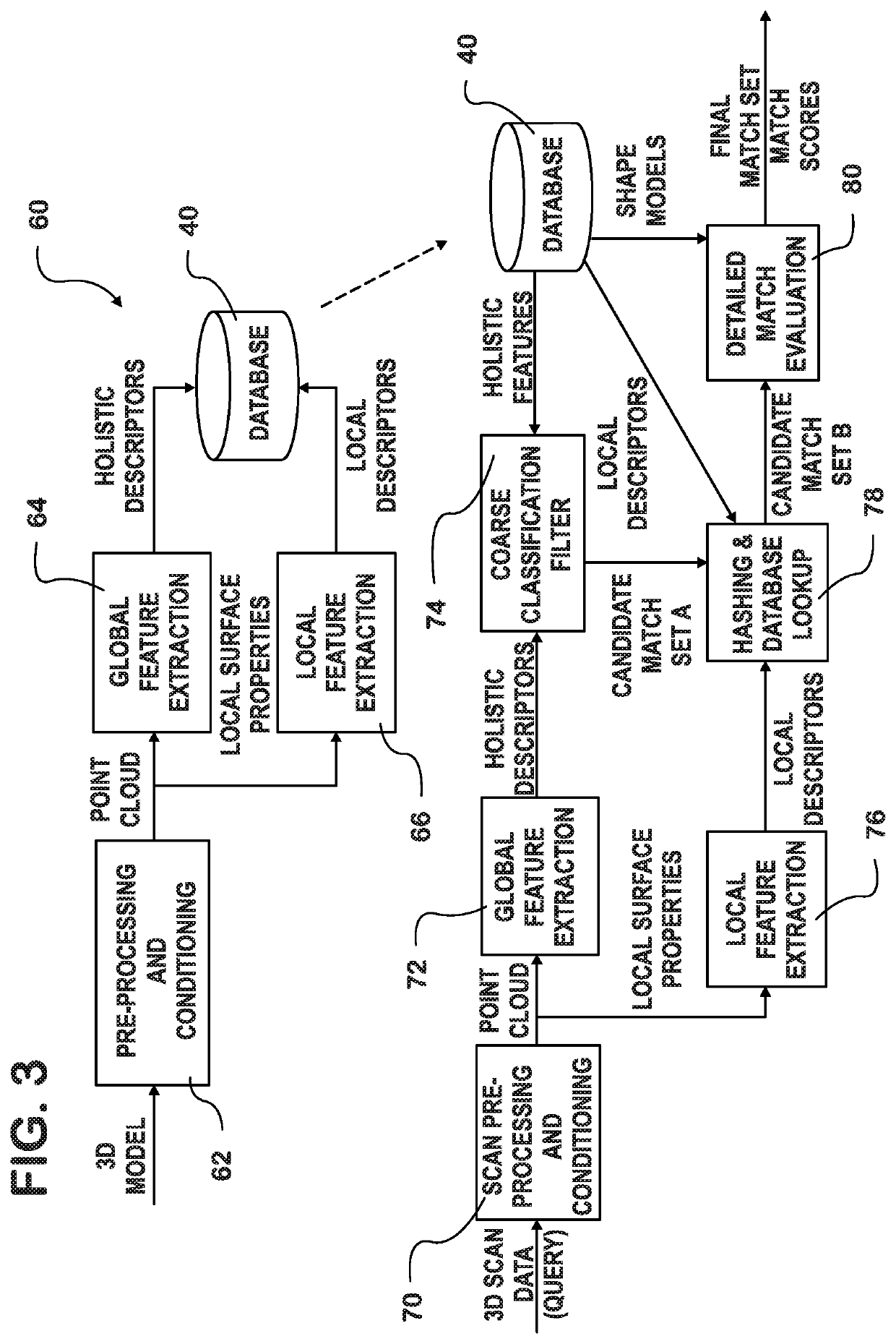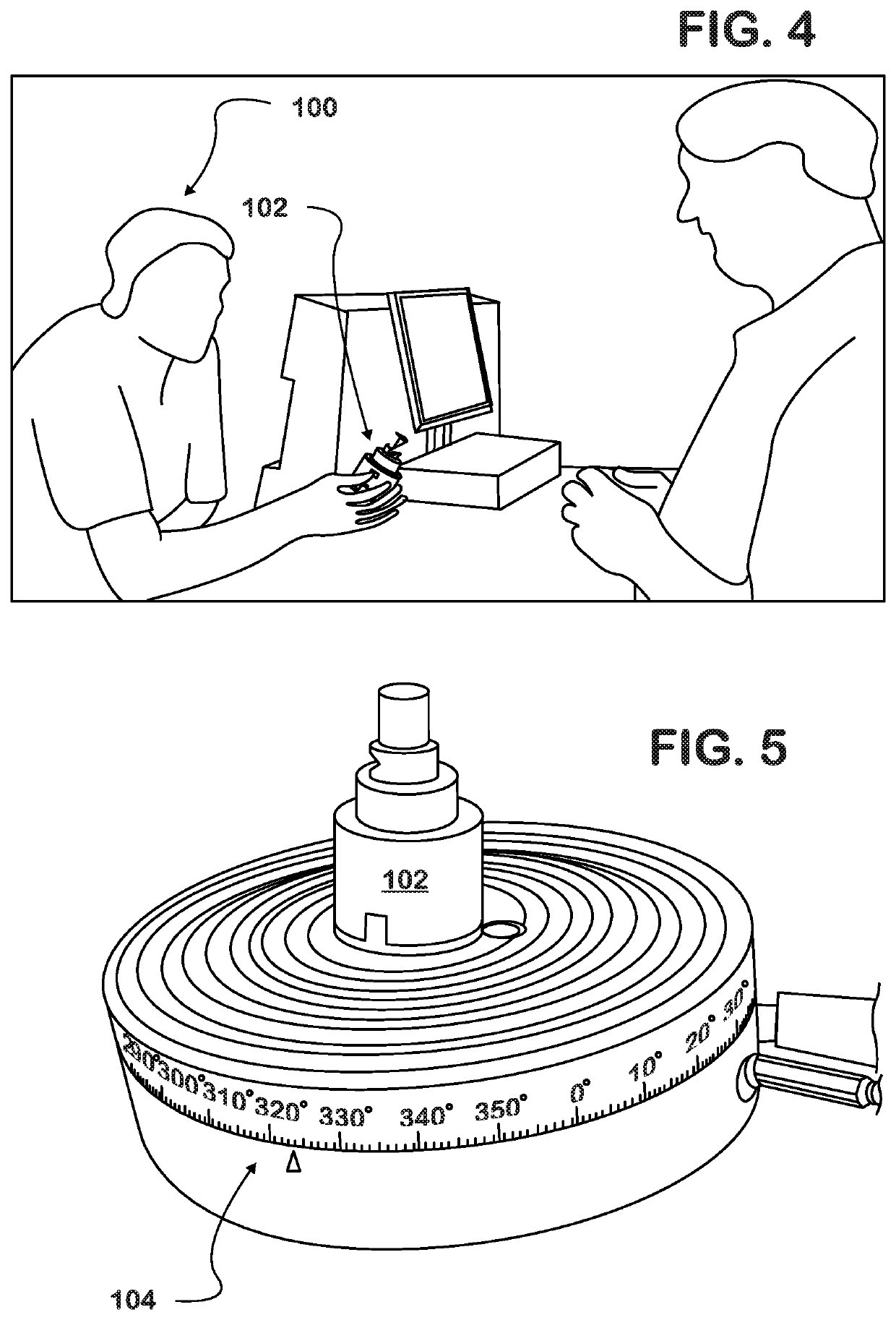System and Method for Object Matching Using 3D Imaging
a technology of object matching and 3d imaging, applied in still image data clustering/classification, relational databases, instruments, etc., can solve the problems of difficult identification and repair of specific goods, products, or product lines, and the sheer volume of information is often overwhelming for all, and obtain knowledge that requires years or decades of exposure to lines, etc., to achieve the construction of goods, objects, parts or product databases much more quickly, and the recognition of the effect is much more easily and effectively
- Summary
- Abstract
- Description
- Claims
- Application Information
AI Technical Summary
Benefits of technology
Problems solved by technology
Method used
Image
Examples
Embodiment Construction
[0043]Turning to FIG. 1, there is illustrated therein a low level system level logic flow 10 diagram wherein a user has a physical good, product, object, or part that he / she wishes to identify, e.g., for the purpose of repair, replacement, matching it to a known part, product, object, or good, finding out the price of the part, or re-ordering. Use of the word “part” in this disclosure also means object, product, or good, and vice versa. Some parts may be easily identified by visual inspection 12 from information imprinted on the surface, prior experience, distinctive shape, size, etc. If such is present, and the part is visually identifiable 14, then one merely verifies that the part is correct in step 16, and takes action, ordering the proper part at 18. However, many are not readily identifiable, perhaps due to uncommon brand, outdated product, damaged / dirty condition, missing information tag, or unfamiliarity. In such a case, the user captures the part parameters with a 3D imagin...
PUM
 Login to View More
Login to View More Abstract
Description
Claims
Application Information
 Login to View More
Login to View More - R&D
- Intellectual Property
- Life Sciences
- Materials
- Tech Scout
- Unparalleled Data Quality
- Higher Quality Content
- 60% Fewer Hallucinations
Browse by: Latest US Patents, China's latest patents, Technical Efficacy Thesaurus, Application Domain, Technology Topic, Popular Technical Reports.
© 2025 PatSnap. All rights reserved.Legal|Privacy policy|Modern Slavery Act Transparency Statement|Sitemap|About US| Contact US: help@patsnap.com



